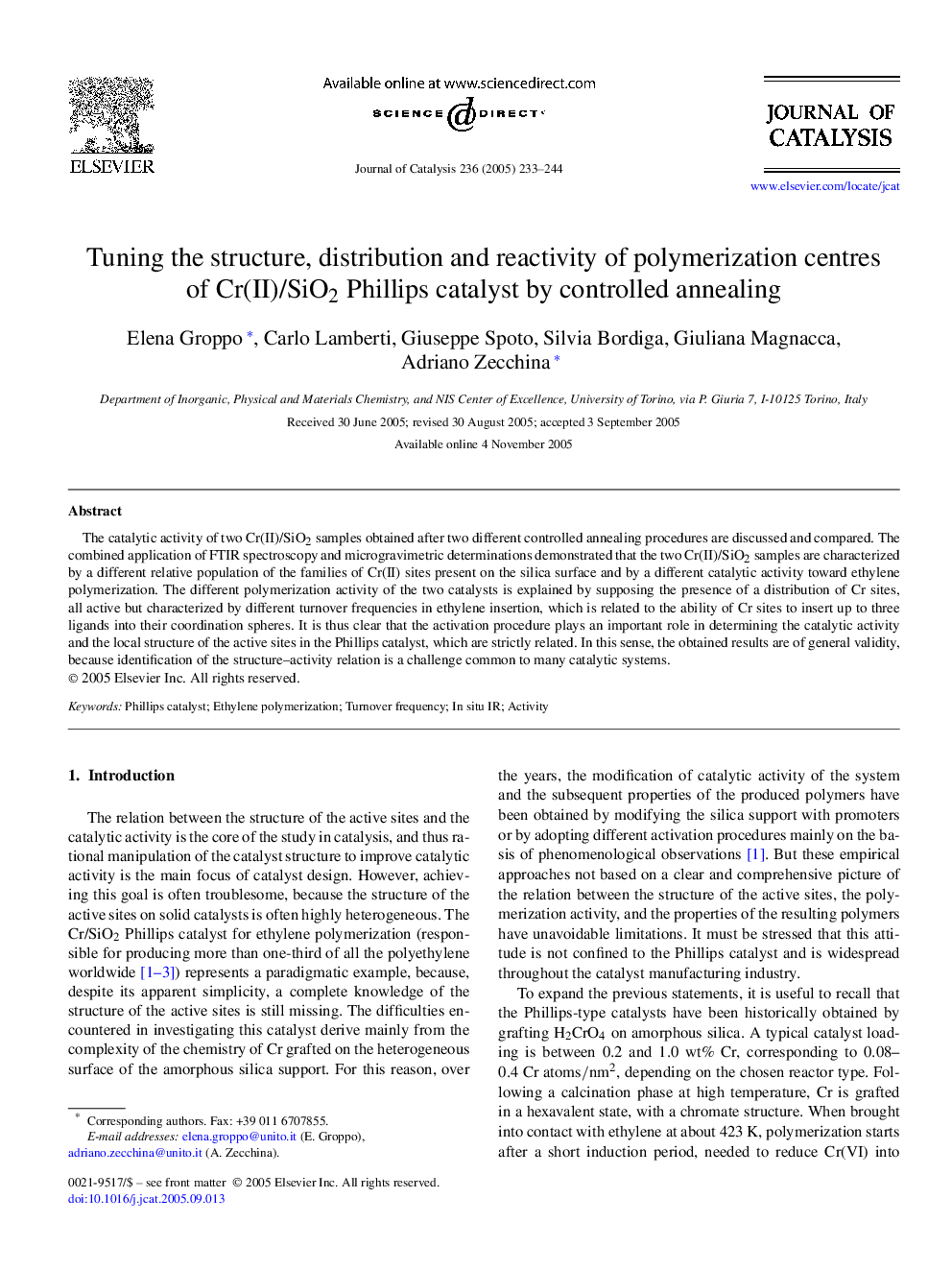| Article ID | Journal | Published Year | Pages | File Type |
|---|---|---|---|---|
| 10244383 | Journal of Catalysis | 2005 | 12 Pages |
Abstract
The catalytic activity of two Cr(II)/SiO2 samples obtained after two different controlled annealing procedures are discussed and compared. The combined application of FTIR spectroscopy and microgravimetric determinations demonstrated that the two Cr(II)/SiO2 samples are characterized by a different relative population of the families of Cr(II) sites present on the silica surface and by a different catalytic activity toward ethylene polymerization. The different polymerization activity of the two catalysts is explained by supposing the presence of a distribution of Cr sites, all active but characterized by different turnover frequencies in ethylene insertion, which is related to the ability of Cr sites to insert up to three ligands into their coordination spheres. It is thus clear that the activation procedure plays an important role in determining the catalytic activity and the local structure of the active sites in the Phillips catalyst, which are strictly related. In this sense, the obtained results are of general validity, because identification of the structure-activity relation is a challenge common to many catalytic systems.
Related Topics
Physical Sciences and Engineering
Chemical Engineering
Catalysis
Authors
Elena Groppo, Carlo Lamberti, Giuseppe Spoto, Silvia Bordiga, Giuliana Magnacca, Adriano Zecchina,
